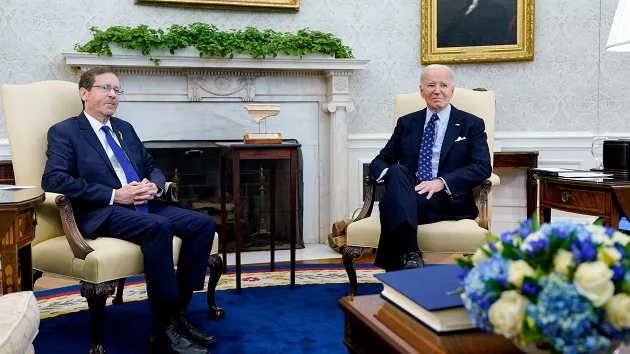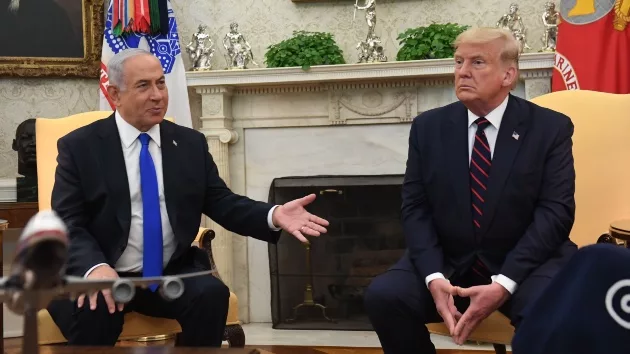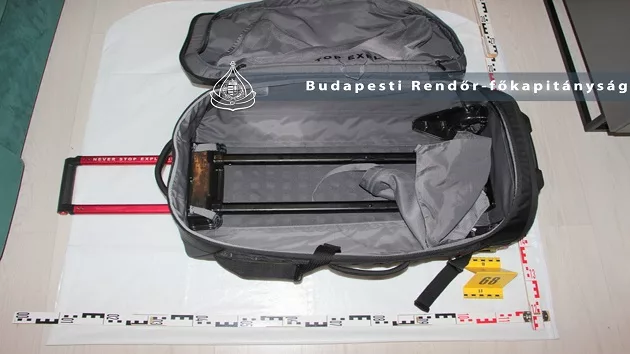
(WASHINGTON) — Leaked classified documents about the U.S. effort to assist Ukraine’s military were posted on the internet much sooner than this week according to an ABC News review of internet posts that indicates the documents, as well as additional documents, were posted on the internet in early March shortly after they were produced. The earlier timeline for the posting of the top secret documents on the internet so soon after being issued only deepens concerns about the operational security risks raised by the leak.
The Pentagon announced on Thursday that it was reviewing the apparent leak of U.S. military documents about the war in Ukraine dated to March 1 that provided information on Ukrainian troop and casualty numbers, Ukrainian training schedules and the timing of U.S. weapons deliveries, among other things. The documents posted on the internet do not appear to include any military planning for the long-anticipated Ukrainian counteroffensive that is expected later this spring.
“We are aware of the reports of social media posts, and the Department is reviewing the matter” Pentagon Deputy Press Secretary Sabrina Singh said in a statement provided to ABC News.
A U.S. official told ABC News that the U.S. government is working to have the documents brought down by social media platforms.
But as of Friday photographs of the documents were still being posted on various social media platforms.
However, it appears that the documents have been posted on the internet much sooner than this week as ABC News has obtained information that indicates that those documents, and some additional documents, were posted on the internet in early March.
A U.S. official discounted the intelligence value of the documents posted on the web telling ABC News that “the assessment is that the documents are of limited intelligence value and appear to have been altered from the original documents.”
The official described them as “a snapshot in time from five weeks ago and the disposition of forces is no longer relevant to the battlefield.”
Each of the documents posted on social media platforms appears to be photographs of folded printouts of individual PowerPoint slides produced by the U.S. military that contain details of the battlefield situation in Ukraine on March 1.
Some of them also contain information about the readiness rates of Ukrainian units, particularly of nine Ukrainian military brigades being supplied by the United States and NATO allies.
And in at least one instance, the documents appear to have been altered to reflect Russian fatality estimates that are significantly lower than the 200,000 killed and wounded that have been publicly stated by U.S. officials.
That alteration has led to speculation among national security analysts that Russia may be behind the dissemination of the leak.
“As many of these were pictures of documents, it appears that it was a deliberate leak done by someone that wished to damage the Ukraine, U.S., and NATO efforts,” said Mick Mulroy, an ABC News contributor and former Deputy Assistant Secretary of Defense.
“Russia’s obvious manipulation of some facts has made it more difficult to determine what is real and what is not,” said Mulroy. “Something that may help somewhat limit the damage overall ironically.”
Mulroy speculates that a leak investigation has already started that “it will be very thorough in finding out how this happened and who was responsible. That individual (or individuals) needs to be held accountable.”
Mykhailo Podolyak, a senior Ukrainian official, said in a statement that the leak contained a “very large amount of fictitious information” that appeared to be “standard elements of operational games by Russian intelligence and nothing more.
“Russia has no doubt that the United States or NATO are directly or indirectly involved in the conflict,” Putin’s spokesperson Dmitry Peskov said about the leaked documents on Friday.
The Pentagon says it is reviewing the apparent leak, but if a formal investigation is launched, it would presumably include a look at officials who would have access to the documents.
Asked to comment on the postings about the documents being posted on an earlier date a Pentagon spokesman referred back to its earlier statement.
Investigators in previous leak investigations have been known to use polygraph tests to help determine the truthfulness of people being interviewed for the investigation.
Copyright © 2023, ABC Audio. All rights reserved.








